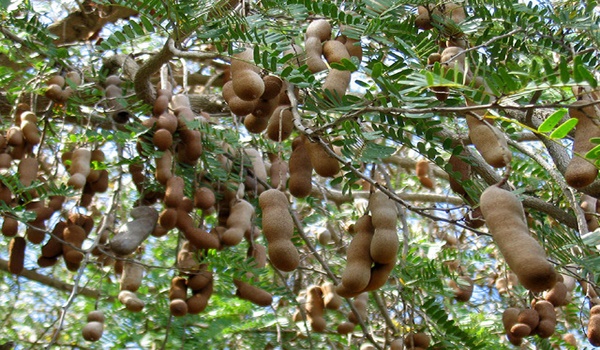Tamarind (Tamarindus Indica) is an amazing exotic fruit and its name comes from the Persian “tamar-i-hing,” which means “date of India.” This fruit has shown to provide a wide range of health benefits.
Studies have revealed that tamarind extract are great for dysentery, abdominal pain, fever, diarrhea, gonorrhea, parasitic infections, constipation, inflammation, and eye diseases.
Moreover, tamarind extract has antioxidant, antimicrobial, wound-healing and anti-venom properties. It is also effective against malaria, diabetes and asthma. Tamarinds contain geraniol which hass been the subject of studies based on pancreatic cancer prevention and treatment.
Further in this article you can read more about tamarinds and their health benefits.
What is tamarind?
Tamarinds grow on exceptionally tall trees that are part of the fabaceae family (beans, peas, and other legumes). These exotic trees grow in warm and dry areas of India, Asia, Mexico and North Africa.
Tamarind trees give long brown pods filled with small brown seeds, secured in a sticky pulp. Unripe tamarinds have a sharp and tangy taste.
We have covered some of the benefits provided by tamarinds:
100 grams of tamarind provide the following percentage of the recommended daily intake of these nutrients:
- 36% thiamine
- 35% iron
- 23% magnesium
- 16% phosphous
Tamarinds have been long used for improving digestion, relieving stomach discomfort, treating bile disorder, and they are also used as a laxative.
Tamarind pulp contains non-starch polysaccharides that bind with bile and flush waste through colon.
Tamarinds also contain large amounts of tartaric acid which is responsible for their tangy taste, and what is more important, it is a powerful antioxidant that destroys free radicals.
This exotic fruit has been traditionally used in the preparation of natural remedies for rheumatism, sunstroke, fecer, inflammation and sore throat. Dried or boiled tamarind leaves and flowers are made into poultices for sprains, conjunctivitis, boils, swollen joints and hemorrhoigs.
In addition to non-starch polycaccharides, tamarind pulp is rich in pectin, mucilage, hemicelluloses, and tannins. 100 grams of tamarind pulp provides about 13 of the recommended daily intake of fiber. Tamarind pulp reduces and eliminates bad cholesterol.
Tamarinds are largely used for their high mineral content. They are abundat in selenium, potassium, calcium, iron, zinc and copper. Potassium is essential for blood pressure and heart rate, as it is an important part of bodily and cell fluids that regulate blood pressure and heart rate. Iron is needed in the production of red blood cells.
This fruit contains vitamins C, A, niacin, riboflavin, and folic acid.
Limonene, geraniol, safrole, cinnamic acid, methyl salicylate, pyrazine and alkythiazoles are just some of the phytochemicals found in tamarinds.
To sum up, tamarinds have shown to be effective in the treatment of many health treatments which is why they are largely used in Ayurvedic treatments for cardiovascular problems, as well as for gastric and digestive issues. Having in mind the aforementioned benefits, consider including this exotic fruit into your diet and improve your well-being.


